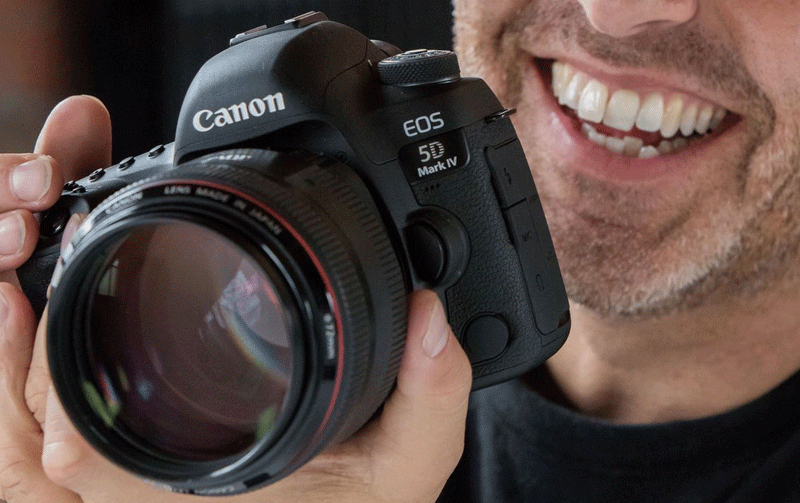Introduction
The Canon EOS 5D Mark IV is a premium camera from the 5D series built for both professional photographers and advanced enthusiasts. It is a highly versatile camera offering high-performing features for a limitless list of applications from portraits and products to weddings and landscapes, whether it’s still photography or video production. Don’t let the close resemblance to its predecessor fool you, it comes with a plethora of new features and notable upgrades from the Mark III.
According to Canon, the company solicited the views of 5D series users when building the IV. From their findings, AF speed, AF precision, resolution, and dynamic range were the top aspects users wanted upgraded, all taken care of in the Mark IV.
The AF system and processor
The 61-point, High Density Reticular AF system gives up to 24% more vertical coverage than the Mark III system. This camera is the Canon’s first full frame DSLR able to persistently focus in Live View when you’re taking still photos. It does exceedingly well staying with the initial face or subject you originally focused on, and there’s a ‘Face Detect + Tracking’ mode that lets you tap on your subject to specify it. Among the numerous customisable buttons on the camera, there’s an unnamed one positioned below the mini joystick that lets you toggle through different focus area modes. There’s an option that lets you deactivate the autofocus function on the shutter release button and take it to the AF-ON button. The camera also comes with an improved DIGIC 6+ image processor that keeps the camera performing optimally even with the remarkable upgrade in pixel count.
Resolution and Dual Pixel Raw
The Mark IV is a boasts a 30.4 megapixel full frame CMOS imaging sensor. While this is not the only camera with this level of resolution, no other camera has this high a resolution and runs as fast as the Mark IV. For instance, the 5DS and 5DSR, which have a higher resolution but run markedly slower. There’s also the Nikon D810 which has a slightly higher resolution but only 5fps. The 5D Mark IV has a particularly useful Dual Pixel Raw option that you may find invaluable in certain shooting situations. This feature causes the camera to record two separate 30MP images from each pixel’s ‘right-looking’ and ‘left-looking’ photodiodes. While you’ll be left with files double the regular size, you’ll be able to ‘micro-adjust’ the image, shift the bokeh, and reduce ghosting.
Other specs
The Mark IV has a burst rate of 7fps which is fast enough for any shooting situation except exclusive full-time sports coverage. Certainly one of the best additions to the Mark IV, the 4K video capture feature lets users record in either 24 or 30p, but with a 1.64x crop. The camera captures footage in Motion JPEG and permits 4K Frame Grabs. The 5D Mark IV packs a number of other useful features including a full touch screen interface, GPS, built-in Wi-Fi/NFC, an interval timer, and improved weather sealing.
Pros
Superb ISO performance
Enhanced dynamic range
7fps burst rate with extensive JPEG buffer
Full-frame sensor
Solid 4K video recording
Advanced AF system
Superb sensor performance
Cons
Weighty
Costly
Continuous recording limit of 30 minutes
Cumbersome 4K video codec
Soft-looking JPEG files at default settings
Built-in flash and flipping LCD are missing
Price and lens size
When the Canon 5D mark IV hit the US market in September 2016, it costs around £2,700 for the body alone, £3,400 with the 24-70mm F4L IS USM lens and £3,530 with the 24-105mm F4L IS II USM lens.

